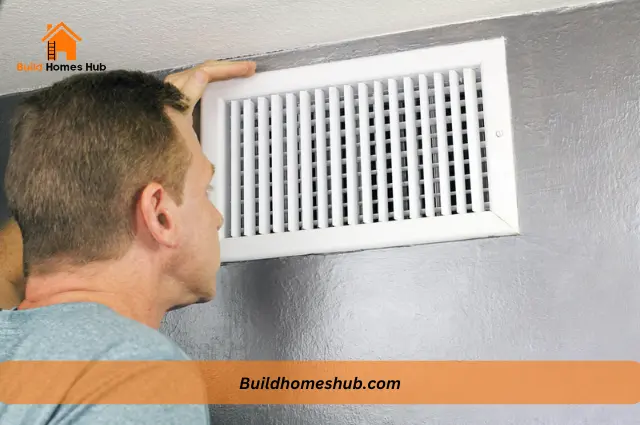When it comes to designing an efficient and effective HVAC system, every detail matters. One crucial aspect that often sparks debate among homeowners, architects, and HVAC professionals is the orientation of return vents. Return vents play a pivotal role in ensuring proper air circulation and maintaining indoor air quality. However, determining the ideal direction for return vents can be a perplexing task, as various factors need to be considered.
In this article, we will explore the different perspectives and considerations regarding the direction in which return vents should face, aiming to provide clarity on this matter.
Which Direction Should Return Vents Face?
Return vents should typically face towards the center of the room or area they serve. This orientation allows for efficient airflow and balanced circulation of air within the space. Placing the return vents in central locations, such as hallways or large open areas, ensures that they can effectively draw air from the occupied areas and maintain a comfortable indoor environment.
It is important to avoid placing return vents near potential sources of contamination or obstructions that may impede the airflow.
Why Should Return Vents Face Center of the Room?
Return vents should face towards the center of the room or area they serve for several reasons related to airflow efficiency and comfort. Here are the main factors to consider:
1. Balanced Air Circulation
Placing return vents in the center of a room helps promote balanced air circulation throughout the space. When the return vents are centrally located, they can effectively draw air from all areas of the room, preventing stagnant air pockets and ensuring consistent airflow. This helps maintain a more uniform temperature and better air quality throughout the space.
2. Efficient Air Return
The purpose of return vents is to draw air back into the HVAC system for conditioning and redistribution. By positioning the return vents in the center of the room, they can capture air from a larger area, allowing for a more efficient return process. This is particularly important in larger rooms or open-concept spaces where air may not naturally flow towards a single location.
3. Reduction of Hot/Cold Spots
Placing return vents in the center of the room can help alleviate hot or cold spots by facilitating the movement of air from all areas of the room. If the return vents are located near the walls or in corners, they may primarily draw air from those localized areas, leading to uneven temperature distribution. Central placement ensures a more balanced extraction of air, reducing temperature differentials within the space.
4. Minimization of Pressure Imbalances
HVAC systems rely on a balanced airflow between supply and return vents to operate efficiently. When return vents are positioned towards the center of the room, it helps maintain a proper balance of air pressure. If return vents are placed too close to supply vents or in areas with restricted airflow, it can create pressure imbalances that strain the system, decrease efficiency, and potentially lead to issues like air leakage or poor ventilation.
5. Avoidance of Contaminant Sources
Return vents should be positioned away from potential sources of contaminants that could negatively affect indoor air quality. Placing them in the center of the room helps minimize the risk of drawing in pollutants from areas like kitchens, bathrooms, or dusty corners. By pulling air from the central part of the room, the return vents can capture a cleaner air mixture, contributing to a healthier indoor environment.
Factors That Influence Vent Placement
1. Room Size and Layout
The size and layout of the room or area being served by the vent play a crucial role in determining the placement. Larger rooms may require multiple return vents to achieve balanced airflow. Additionally, the location of walls, partitions, and furniture should be considered to avoid obstructing the vents and impeding air circulation.
2. Occupancy and Usage Patterns
The number of occupants and how the space is used can impact vent placement. Areas with higher occupancy or where people spend more time, such as living rooms or offices, may require more return vents to effectively draw out the exhaled air and maintain indoor air quality.
3. HVAC System Design
The design and specifications of the HVAC system, including the location of supply vents, should be taken into account when placing return vents. Properly balancing supply and return vents ensures efficient airflow and prevents pressure imbalances that can strain the system.
4. Airflow Patterns and Obstructions
Understanding the natural airflow patterns within the room is important for vent placement. Return vents should be positioned where they can draw air evenly from the occupied spaces and avoid areas with stagnant or trapped air. Additionally, potential obstructions such as curtains, furniture, or equipment should be considered to prevent blockage of the vents.
5. Noise Considerations
Vent placement should also take into account noise considerations. Placing return vents away from quiet areas, such as bedrooms or meeting rooms, can help minimize noise disturbance from the airflow.
6. Contaminant Sources
Return vents should be located away from potential sources of contaminants such as kitchens, bathrooms, or areas with high dust accumulation. Placing vents strategically can help prevent drawing in pollutants and maintain better indoor air quality.
Does it Matter Which Way a Return Vent Faces?
The direction in which a return vent faces does not significantly impact its functionality or the performance of the HVAC system. Unlike supply vents, which have a specific direction for directing conditioned air into a room, return vents primarily focus on drawing air back into the HVAC system for conditioning and redistribution. As long as the return vent is unobstructed and allows for the free flow of air, the orientation of the vent itself is not critical.
What matters most for return vents is their location and ensuring they are strategically placed to capture air from the occupied spaces effectively. Central placement of return vents in a room or area is generally recommended to promote balanced air circulation and efficient airflow throughout the space. It’s also essential to avoid positioning return vents near potential sources of contamination or obstructions that may impede the airflow.
Conclusion
In conclusion, the orientation of return vents is an important aspect of HVAC system design that can significantly impact the overall efficiency and comfort of a space. While there is no one-size-fits-all answer to the question of which way return vents should face, several key factors should be considered. These include the location of supply vents, the layout of the space, the size of the room, and the presence of potential contaminants. Balancing factors such as air circulation, temperature distribution, and indoor air quality is crucial in making an informed decision.
Ultimately, it is recommended to consult with HVAC professionals or engineers who can assess the specific requirements of your space and provide expert advice tailored to your needs. By taking into account all relevant considerations and seeking professional guidance, you can ensure that the direction of your return vents optimizes your HVAC system’s performance, promotes air circulation, and contributes to a comfortable and healthy indoor environment.
I like to think I can help you with all the information you need on home renovations and DIY tips. You should subscribe.











